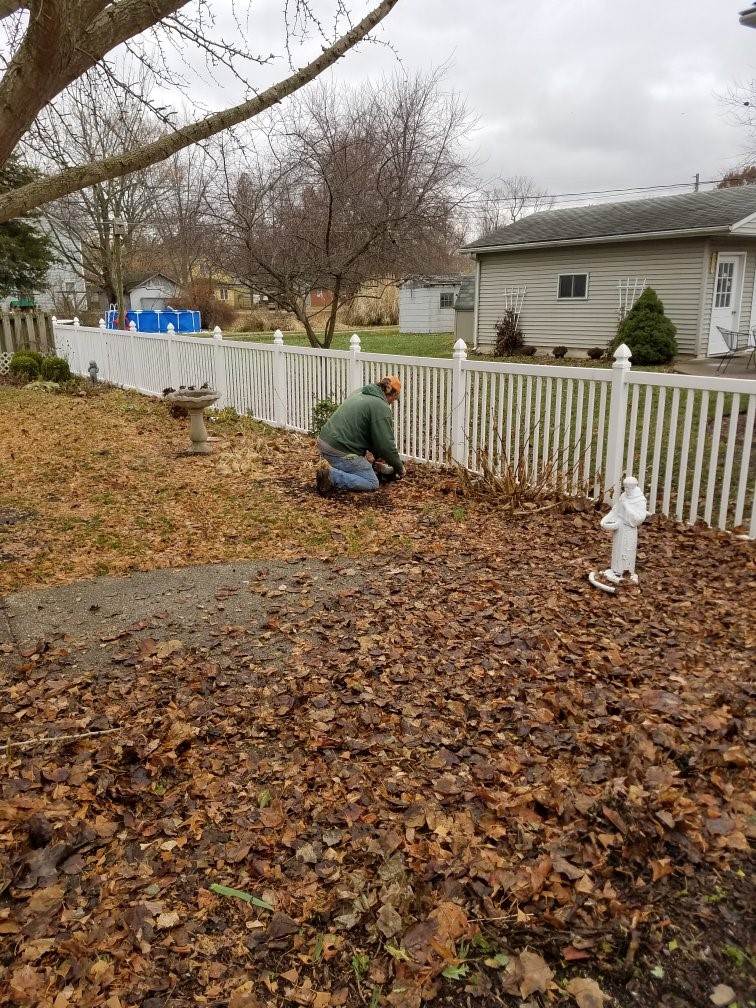When the crisp autumn air has been lowering the temperatures, many people wonder what needs to be done to prepare their yards and landscaping planting beds for winter. Yard cleanups are an important part to Getting your garden ready for fall and winter will keep your garden and landscape healthy so your plants will thrive next year.
It can be confusing to know what plants to prune and which not to prune, what needs to be cleaned out of the beds. Here are answers to those questions and a few other tips about yard cleanup in the fall.
What should I prune back and when should I start?
The time to start any fall pruning is after we have had a couple of hard frosts; this is typically in November and December. This ensures that the plants are dormant and that cutting them back won’t cause any harm.
The best plants to prune in the fall are flowering perennials, like daylilies, salvia, coneflowers, and lythrum. Most of these florals can be cut all the way down to the ground. They will come up from new growth in the spring.
You can also cut down ornamental grasses – but we like to wait until spring for those because they still provide some beautiful winter interest!
 Got lots of leaves? Without a fall yard cleanup, you could be facing wet, moldy leaves in early spring.
Got lots of leaves? Without a fall yard cleanup, you could be facing wet, moldy leaves in early spring.What plants should I not prune back?
Do not trim back spring or summer flowering shrubs, like hydrangeas, lilacs, and azaleas. These types of shrubs will set their new flower buds shortly after they are done flowering each year. When should you prune? The best time to trim is right after their flowers have bloomed. Don't prune lilacs and hydrangeas in the fall. They set their buds after the plant is done blooming. So if you prune, you will be cutting off the flowers for the next year.
Can I leave the clippings in my garden?
Once you have cut back all your perennials, you’ll want to get rid of those clippings and rake out any leaves that are still in the beds. This creates will make your spring cleanup easier, so the leaves aren’t wet and heavy from the winter snow. The last thing you should get rid of is all those pesky weeds! Make sure to get as much of the root system out as possible, to help make sure they don’t come back in the spring. Perennial weeds can pop up. Use a pre-emergent fertilizer to stop weeds next spring.
What should I plant in the fall for spring blooming?
Fall is a great time for planning and planting to get more spring color in your garden!
Some great early-flowering perennials are Baptisia, Creeping Phlox, Irises, Tradescantia, and Peonies. Check out our searchable catalog to search for more spring bloomers.
Fall planting is great because the cooler temperatures and more frequent rains mean that you don’t need to do much watering. While these plants are going dormant, their root system will still work its way down into the soil to establish itself.
Once spring rolls around, and the temperatures warm up, these plants should wake right up and be ready to bloom!
How can I prevent weeds next spring?
After you have the planting beds all cleaned up, we recommend applying pre-emergent weed control. This will, again, make your job easier in the spring to help prevent those weeds from coming back. We also recommend applying a slow-release fertilizer. This will strengthen the plants’ root system and help them come back stronger and healthier the next season.
Make sure you have the proper tools, and keep those tools clean and sharp. A sharp pair of pruners will make a world of difference versus using an old, dull pair.
Should I cover my plants over the winter?
We don’t typically recommend covering shrubs and perennials, as long as they are hardy in your zone. Central Illinois is zone 5, 6 and 7. In our experience, covering plants does more damage than good, since they might “burn up” if they are covered.
If you have any plants that are only marginally hardy in your zone, it might be worth piling a bit of extra mulch around those plants after they are cut down. Otherwise, we let Mother Nature take its course and choose plants that are hardy and can make it through the winter.
I've got a lot of leaves. Should I rake them or let them sit?
You can leave your leaves and mulch them when you mow your lawn in the fall months. This creates a natural mulch to enrich your soil when they decay. But that takes time. Decaying leaves can be an eyesore if you don't have a mulch pile or compost pile. We recommend removing the leaves. This not only creates a clean look for your yard, and also prevents mold and won't hurt your grass or slow its growth. Standing leaves may invite garden pests to take up residence in your leaf pile!
I can't do my yard cleanup alone. How can I get help?
Depending on the size of your yard, these tips could be more work than you want to do. It's hard work to keep your yard tidy, but it pays off with a beautiful yard for the winter and excitement at seeing the first signs of spring.
Fall and spring landscape cleanups are a great addition to our lawn care services. We can clean up your yard separately or you can add cleanup to our annual lawn mowing and lawn care services.
At Designer Landscapes, we’ve got a whole team ready to help you! We offer a variety of garden cleanup services, from weeding and leaf raking to trimming and removal.
Contact Designer Landscapes for your yard cleanup!